“Are we in the Sacred Valley yet?”
An American lady in my tour group asked, even though we were already in the third and final town of our tour.
What she – and many tourists – misunderstood was that the Sacred Valley is just a valley. In truth, the Sacred valley is a range of valleys and towns and rivers.
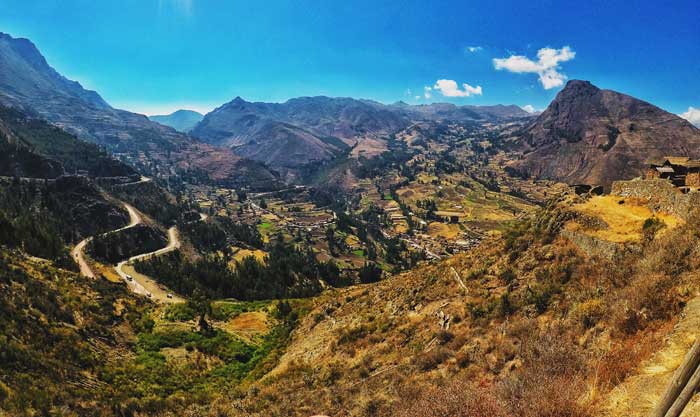
Peru is not just Machu Picchu
Between the ancient Inca capital of Cusco and Machu Picchu is a ridiculously scenic valley range called the Sacred Valley of the Incas (Valle Sagrado de los Incas).
Carved by the Urubamba River, dotted with photogenic little towns and abandoned ruins, and only 20km from Cusco, the Sacred Valley was worshipped for its fertile land, agreeable climate, abundance of fruits and plants and strategic position.
Because of that, it was an important region for the Incas and served as an agricultural, spiritual and political centre for them.
Even though the Inca Empire has long fallen, the Sacred Valley still holds much of its ancient flavours; like the spiritual ceremonies, traditional colourful dresses, reverence to Pachamama (Mother Earth) and of course, the adorable llamas wandering about.
How to Go to the Sacred Valley
Most people visit the Sacred Valley as part of multiple organized one-day tours. Cusco is probably the biggest tourist city I’ve visited and you’ll find plenty of tour companies offering the Sacred Valley tours. Almost every tour agency sells the exact same tour – some give a better sales pitch, while some offer better prices.
One major point to take note is that the cheaper tour agencies usually lump their customers together in the same bus and sometimes it happens that everyone in the group is a native Spanish speaker except you. Better double-check with the agency before signing up!
It is possible to go by yourself but you don’t save much. I paid PEN $25 (USD $7.50) for the half-day Moray and Maras tour, and PEN $45 for the full-day Sacred Valley tour. Plus, I got the benefit of a knowledgeable guide and transport.

If you want to do it yourself, download the amazing app maps.me and on it shows the location of the buses/combis to Pisac, Urubamba and Ollantaytambo. It can’t get any simpler than that.
Here is a rough guide on the locations according to the different ‘circuits’.
The Big Three: Pisac, Urubamba, Ollantaytambo
This is the classic Sacred Valley tour with gorgeous views on the way to each destination. We stopped at a viewpoint before anything else, and I gasped at the beauty of the valley.
The green trees dotted the brown mountains, whose sloping profiles a stark contrast to the pale blue sky. Tiny little houses laid in perfect shaped grids; as do agricultural lands of different coloured crops. White clouds hovered just above the mountains and provided a mystical feeling.
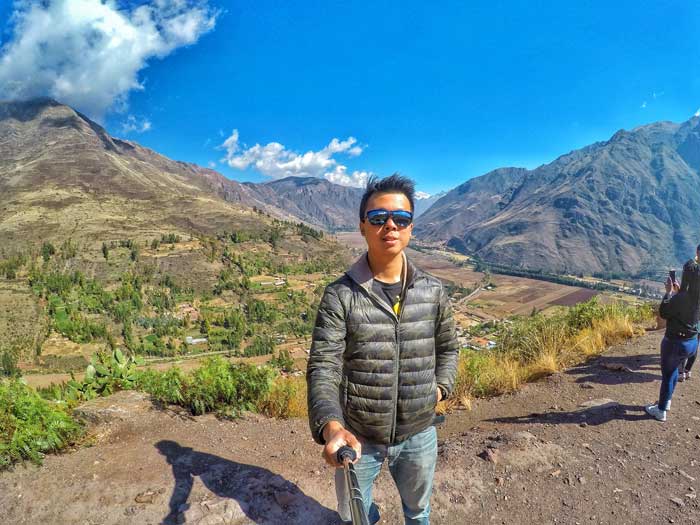
Before heading to our first official destination, we stopped at a small town along the way: Corao. We only had 20min at this stop, so we only visited the artisanal market with lots of colourful souvenir stands. The main attraction of this market, though, is a couple of llamas in the centre of the market, ready to pose for photos.
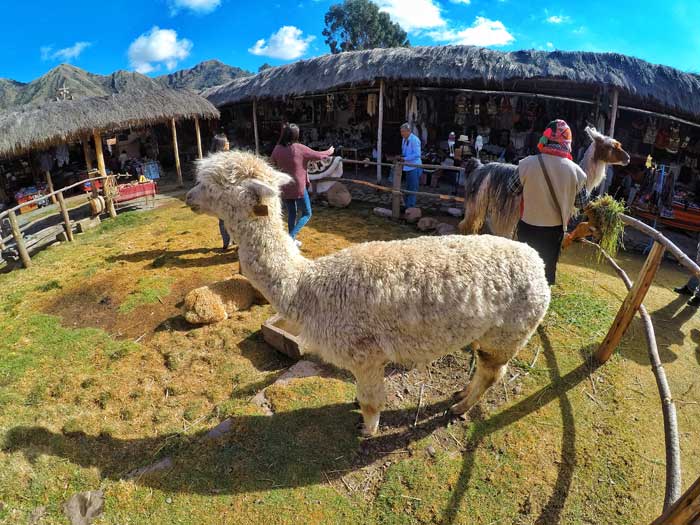
Pisac
Pisac is known for its famous Sunday market which has all sorts of colourful knitted alpaca wool clothing, exquisitely-designed leather notebooks, touristy shot glasses, magnets and much more. Our tour guide Walter said that Pisac is the cheapest place to buy such souvenirs in the region.
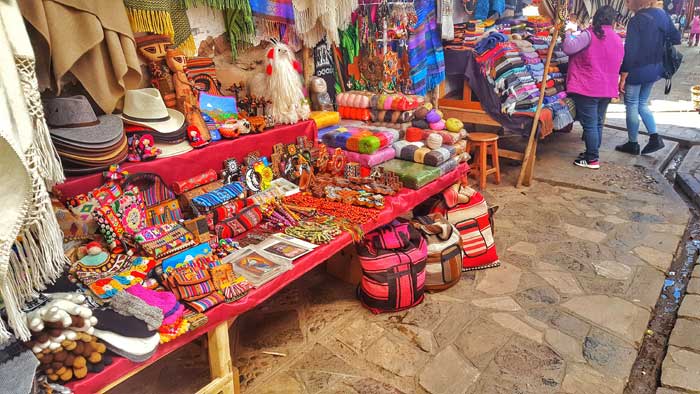
Little girls in traditional colourful costumes walk around with llamas in tow, asking tourists for tips in exchange for a photo. Shrewd little businesswomen.
Peru still mines for gold and silver and in the town is a jewellery store that looks more like it belongs to a modern city than a small town. The brightly lit store and brightly shining jewelleries is a girl’s dream come true.
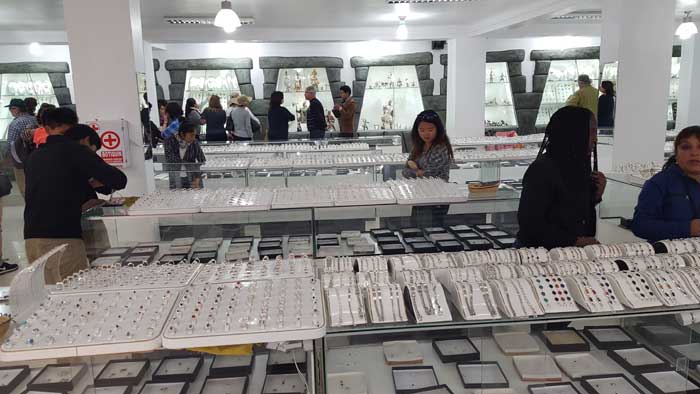
Perhaps Pisac’s greatest claim to fame isn’t in the town itself, but the pre-Colombian agricultural terraces and hilltop Inca fortress towering over the village.
Walter shared that there was a total of 276 level of rice terraces connected by an irrigation system and steps, all divided into different sectors: the higher levels were for the colder crops while the lower ones were for the warmer crops.
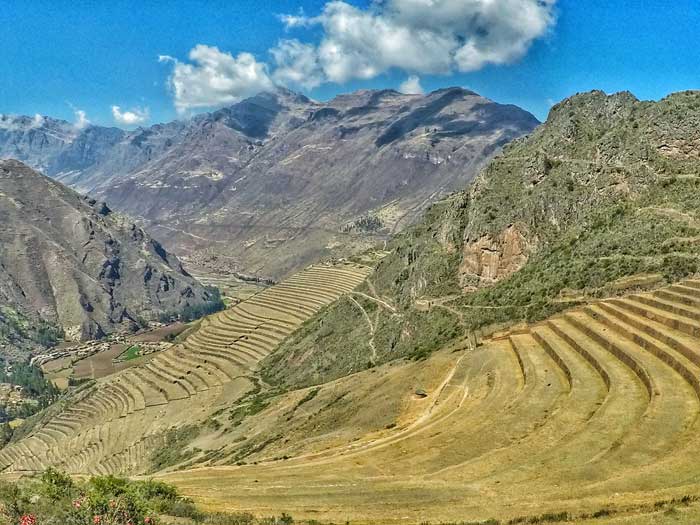
The rice terraces looked so perfectly carved we couldn’t help but wondered: How did they do it?
More interesting (to me) than the rice terraces was the Inca fortress, now in ruins. Perched high up on a hill and requires a while to summit, it was built for the high society and provided vantage views of the surrounding valley. I climbed up the ‘stairways to heaven’ and was rewarded with views that were out of this world.
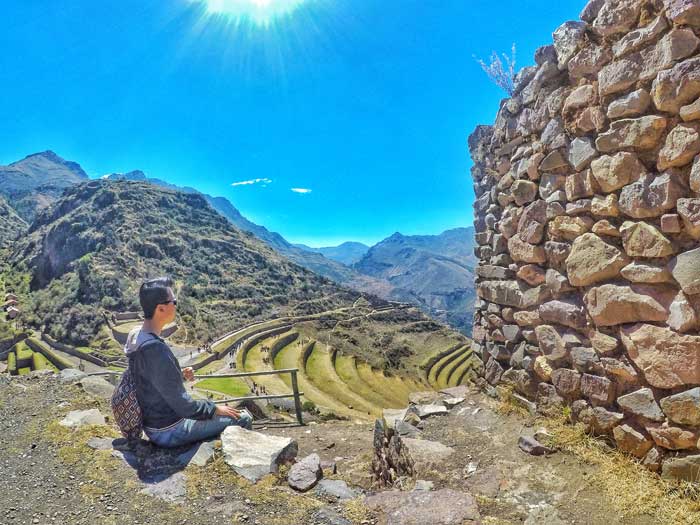
The ruins included temples, stone water channels and even tombs built into the cliffs. The Incas were buried with their treasures, and when the Spanish treasure hunters came, they dug out the tombs, leaving behind these large visible holes in the cliffs.
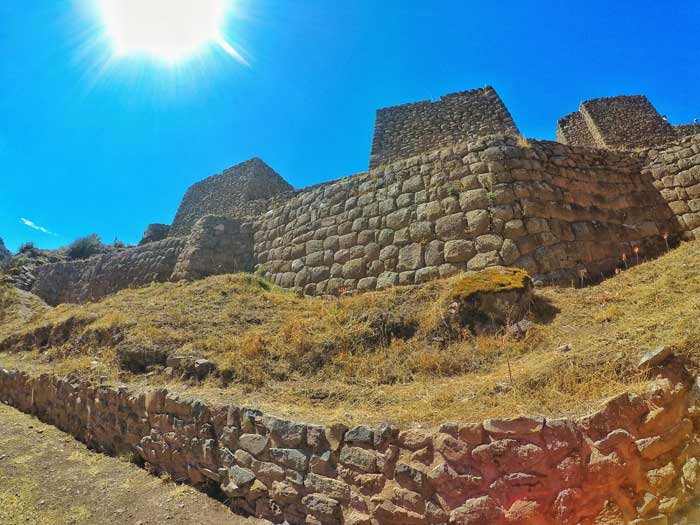
Urubamba
We stopped at Urubamba for a buffet lunch. And only lunch.
Thankfully, mine wasn’t included so I had the chance to explore the city for an hour, while everyone else stayed in the restaurant.
Urubamba is the largest town in the Sacred Valley and lies along the road from Cusco to Machu Picchu, beside the Urubamba River, its namesake.
This city is considered more of a commercial hub than a tourist attraction and indeed, when I walked through it, I saw vendors selling fruits and vegetables, kids in school uniforms, and people going on their daily lives.
Ollantaytambo
Possibly the most touristic village I’ve encountered, you’ll see colourful words on blackboards displaying tours to the surroundings and menus of the day, while walking on the cobblestoned streets. Unsurprising - since this is where most travellers hop on the train to Aguas Caliente for Machu Picchu.
Ollantaytambo is also the home to an Inca archaeological site, the bulk of which was a huge stone crop terrace that wrapped and flowed around the impossibly steep hillsides. This terrace provided flat ground for farming and prevented landslides and flooding.

We climbed up the steep terraces under the hot afternoon sun and had to stop to catch our breaths. Atop the terraces is the Temple of the Sun, now in pieces over the place. Walter pointed out that the temple was abandoned and left unfinished when the Spanish came in the 1500s.
With great views surrounding us, Walter went into storytelling mode.
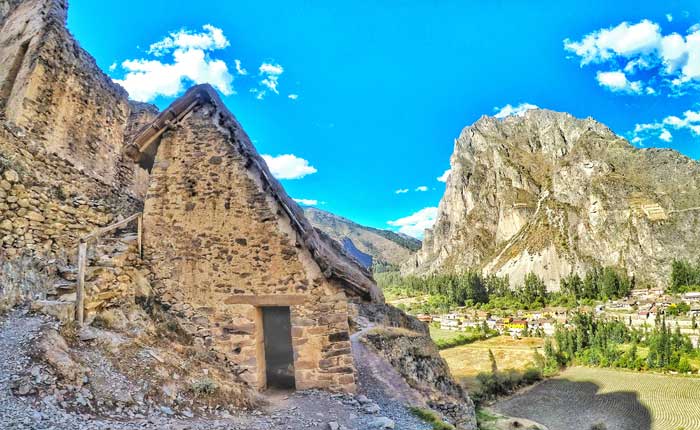
Ollantaytambo was the royal estate of Emperor Pachacuti, where it flourished as a bustling agricultural center. Later, it served as a fortress for Manco Inca Yupanqui, who led the Inca resistance.
It was here that the Incas flooded the valley with their irrigation system and bogged down a force of horse-riding Spanish soldiers led by Francisco Pizarro's brother.
The irrigation system was an example of the hydro-engineering genius of the Incas, bringing in clean and fresh drinking water from the rivers to the farmlands and people.
While we were at the top, Walter pointed at a quarry far across the valley over the river and mentioned that there was where the Incas got the stones used for the buildings - an incredible feat at that time and involved thousands of workers and lack of wheels.
Another mystery like the Tiwanaku in Bolivia: How did they cut the granite stones when there was nothing hard enough at that time?
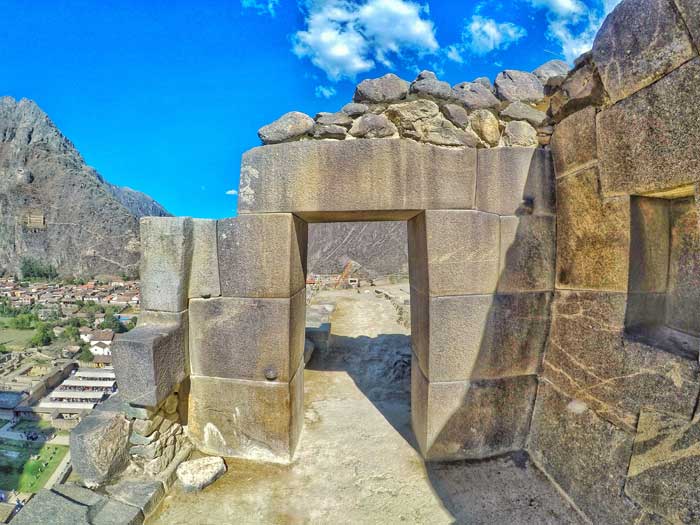
Surrounding the village and ruins are mountains with ancient granaries built into them; storehouses carved into the hills with supplies of food, clothes, and weapons.
The most interesting part was when Walter held up a book with an image of the mountain opposite of us and pointed out a face in the mountain, which the Incas believed to be Wiracocha, the creator God.
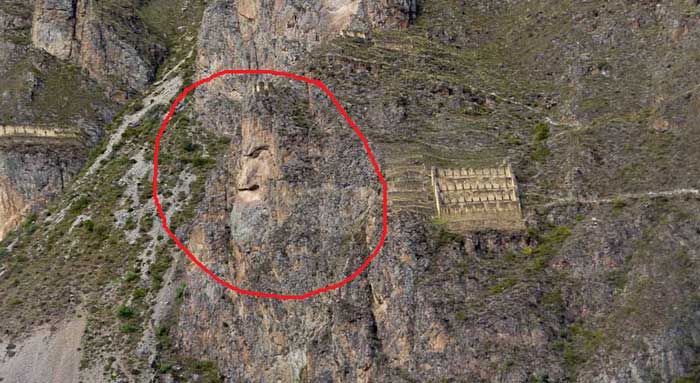
The Two Ms: Maras and Moray
Another popular circuit of the valley is a visit to the agricultural laboratory and salt mines, both located near the city of Urubamba.
Moray
Most tours bring you first to the Moray terraces. When looked from above, it looks like a natural amphitheatre, or if you prefer, an alien creation.
These huge terraces have been built into a natural depression in the ground, all in perfect concentric circles; 7 levels to the middle ‘stage’ followed by 7 more to the bottom - another display of Inca engineering genius.
To the uninformed, these terraces may have just been another ‘nice sight’. Thankfully, I had a guide with me to explain about all the historical significance of the venues.
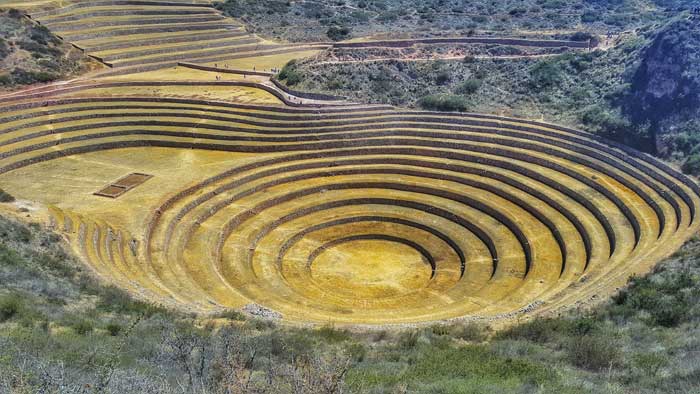
Leo, my guide for this tour, started by telling us that agriculture was the Inca’s main activity; and that these terraces acted as an agricultural laboratory.
Each level in the 150m terrace bowl simulated a different altitude in the region and the temperature differences at each terrace level accurately matched the actual regions they simulated. Naturally, the lower levels were ideal for warmer crops and the higher ones for cooler crops.
It may not seem like a big difference in altitude but there is a temperature difference of as much as 15-degree Celcius between the top and bottom terrace.
The Incas possessed a highly-tuned ecological sensibility and this massive agricultural experiment in respect to wind, temperature and light patterns throughout the years allowed the Incas to expand their vast crop empire (there are more than 2000 types of corns and 4000 types of potatoes in Peru).
Leo added that during the raining season, the whole terrace bowl becomes filled to the brim and the terraces are green in colour (like in promotional photos), unlike the brown laboratory I visited.
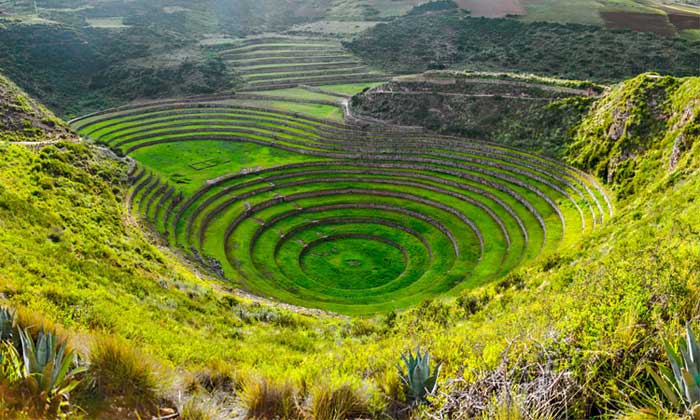
There are so many ruins and ancient sites in Peru that they start to look the same and after a while, people get bored of them. But Moray stands out as one of the most impressive feats of ancient engineering and understanding of Pachamama’s delicate equilibrium and how it provides for us, her Children.
Maras Salt Mines
The highlight of the already amazing Sacred Valley attractions, for me, would be the Maras Salt Mines (Salineras de Maras).
I have seen the largest salt flat in Bolivia, I have seen incredible rice ponds in Asia, but this combination of salt flat and rice ponds blew me away.
Strategically tucked into the hills of Maras, these cascading shallow pools form a network of ancient salt deposits, built way before the Incas.
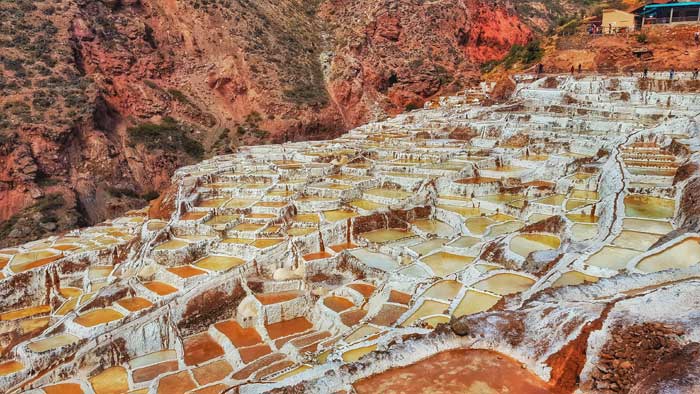
Salt water in the Andean mountains? Yup.
The warm salty water actually comes from a subterranean natural spring, mixed with salt deposits from salt lakes, and cleverly channelled into the thousands of salt ponds here at Maras, and left to evaporate, leaving behind deposits of salt crystals.
The people living here throughout the ages were smart enough to exploit it, making a living from the salt that has different mineral components to other places.
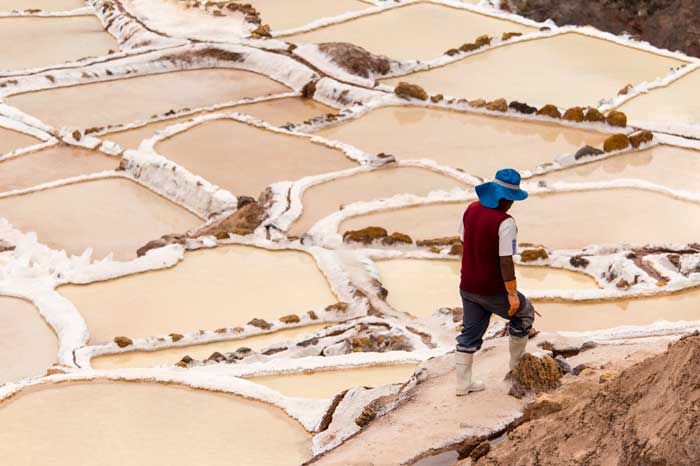
Photo: Victor Belloti
What is impressive is that these salt mines are part of a cooperative – and not a single owner - that has been around since the Inca times and each pond belongs to a member of the community, the size depending on the family.
According to my guide, the salt here, called Sal de Los Andes, has different varieties and each has different uses. For e.g., some are table salt, some are for cooking, and others are used for preserving meat.
There’s even pink salt that can be found on Amazon!
Entrance fee to the Salt Mines: PEN $10
Chinchero
Your tour may or may not bring you to the picturesque village of Chinchero, known locally as the ‘birthplace of the rainbow’.
It’s major tourist attraction is the Sunday market which sells similar colourful trinkets like all artisanal markets, but less touristy than the one at Pisac.
Chinchero is also the home to traditional Peruvian weaving and I had the opportunity to attend a weaving demonstration and the honour of having the lady speaking only to me in English.

Photo: Victor Belloti
She explained how natural dyes can be obtained by crushing leaves, purple corns and even dried cochineal bugs to obtain all the colours of the rainbow.
Her colleagues helped to show how wool can be washed, dyed and spun, all while we were sipping from a hot cup of tea.
The Interpretation Center of Andean Textiles also displays (and sells) alpaca wool creations from jumpers to blankets to tablecloths.
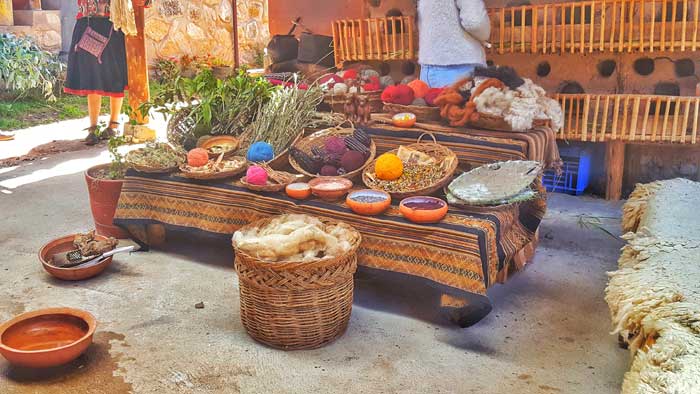
There are also ruins in Chinchero, once a summer getaway country-resort of the Inca Tupac Yupanqui. The ruins include a stone throne, aqueducts and terraces, many of which still in use today. Except the throne, of course.
The Southern Valley: Tipon, Pikillaqta, Andahuaylillas
If you’re still not sick of ruins, the Southern Valley circuit is a good day trip from Cusco.
Technically not in the Sacred Valley, I still include them here for their similarities and entry requirements. I have to add that I did not visit the Southern Valley due to time limitations, but I did enquire at a tour agency.
Likewise, the Southern Valley is not as popular with tourists and if you do intend to visit, you’ll be one of the rare ones there.
Tipon
The Incas worshipped Pachamama (Mother Earth); Inti (Father Sun); Wiracocha (Creator God) amongst other elements - how could they miss out the element of water?
Tipon is where they worshipped Water. There are aqueducts, water channels, fountains and an overall impressive hydraulic engineering system to provide the calming sound of water and the sensation of being close to the Gods.
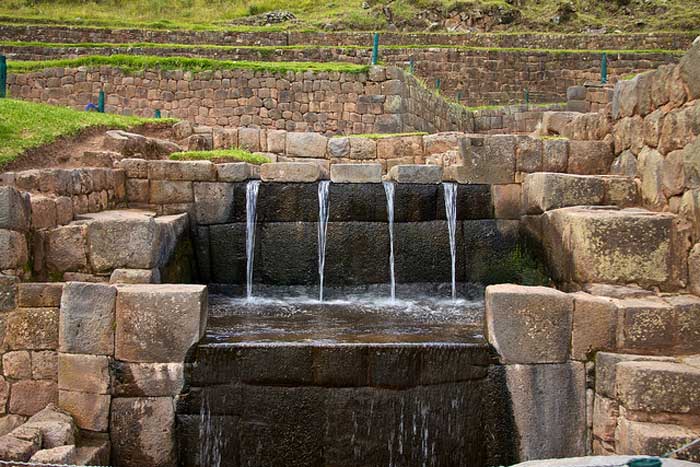
Image Credit: McKay Savage
Pikillaqta
The only pre-Inca ruins in the region, Pikillaqta is humorously known as ‘city of the fleas’. Literally, the word Pikillaqta means ‘lousy town’ in Quechua, the language of the Incas.
The town was built by the Wari people between AD 700 – 900 and the obvious differences can be seen from the construction materials.
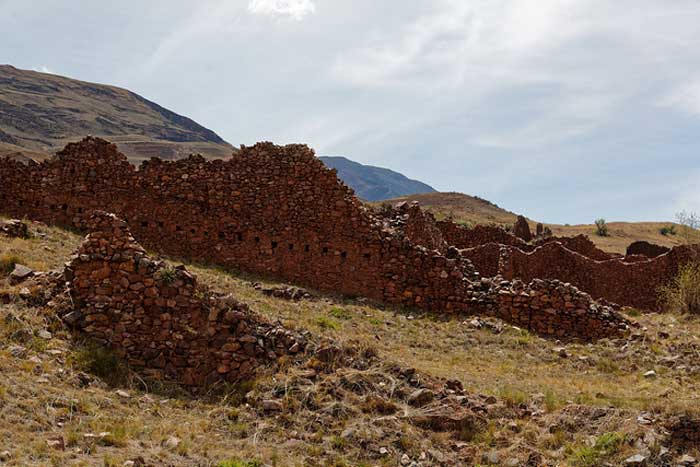
Image Credit: Kimon Berlin
Andahuaylillas
The main attraction in this colonial town is the catholic church, known as the ‘Sistine Chapel of the Americas’ for the impressive paintings, decorations, and other treasures of art and gold.
Unlike the other locations, the church has an entrance fee of PEN $10.
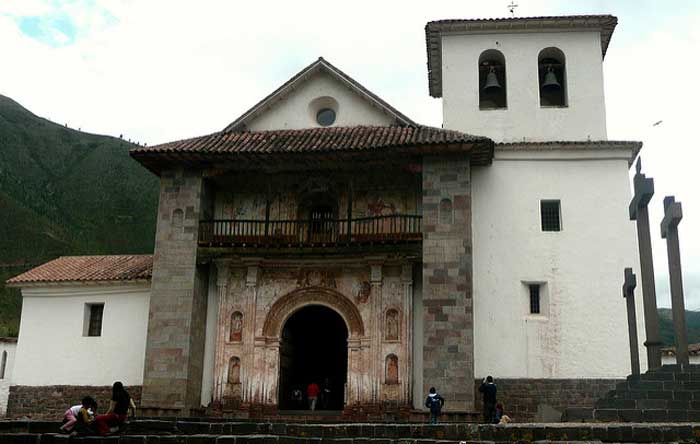
Image Credit: Eduardo Zárate
So there you go:
A guide and personal experience to the Sacred Valley in Cusco, Peru. Historically significant and visually-pleasing, the Sacred Valley of the Incas is a great complement to Machu Picchu.
In fact, I’d recommend visiting the sites here as a lead-up to Machu Picchu. The whole experience at Machu Picchu would be enhanced greatly.
- YOU MIGHT ALSO LIKE: Samaipata: El Fuerte Ruins and Las Cuevas Waterfalls
Most of the ruins mentioned here (except Maras Salt Mines and Andahuaylillas Church) require a tourist ticket (Boleto Turisto) that can be purchased at the COSITUC office at Cusco (103 Avenida del Sol) or at the first attraction you visit. A 10-day pass allows access to the sites and other museums in Cusco and costs PEN $130 (USD $46) or PEN $70 for a student under 25 (Aug 2017).
They are strict with the under-25 rule. I tried twice with an International Student Card but failed. The ticket vendor even used a calculator to count my age.
Alternatively, if you are short of time, you can buy a 2-day pass of the Sacred Valley circuit for PEN $70 (USD $25).
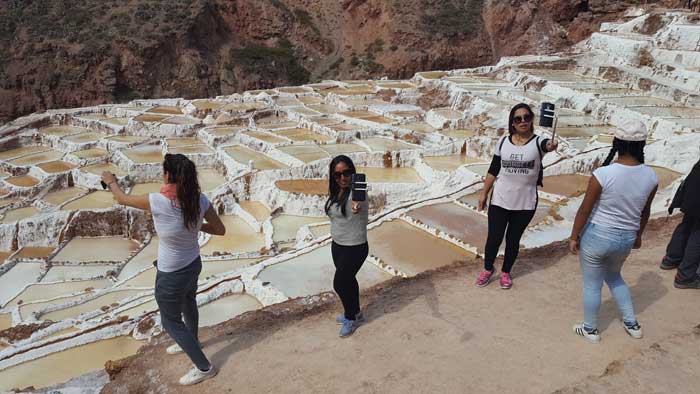
And now, it’s your turn.

